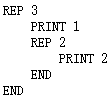随着人工智能(AI)技术的迅速发展,其在算法和编程领域的应用对传统的竞赛模式带来了新的挑战。为了维护比赛的公平性和公信力,USACO(USA Computing Olympiad)官方制定了一系列新规。以下是详细的规则解读和应对策略。
一、成绩认证制度革新
1.新规内容
特定时间窗口:在金组和铂金组别中,所有参赛选手须在美国东部时间周六12:00 PM的特定时间窗口开始比赛,才能获得“认证成绩”。
认证成绩的重要性:只有获得“认证成绩”的选手才有资格晋级更高组别或获得相关荣誉。
2.影响与应对
这一规定确保了所有参赛者在同一时间段内进行比赛,减少了作弊的可能性。
3.建议
提前准备:确保在比赛当天没有其他冲突,并提前测试网络环境和设备,避免因技术问题错过比赛。
心理准备:集中比赛可能会增加心理压力,建议提前进行模拟训练,适应比赛节奏。
二、严格禁止使用 AI 和 VPN
1.新规内容
禁用生成式 AI:竞赛期间,严禁利用生成式AI(如ChatGPT)及其他自动化工具辅助解题。
禁止更改IP地址:美国地区参赛者禁止使用VPN隐匿真实位置,不得更改IP地址。
违规处罚:违规者将面临账号封禁,以此保障比赛公平公正。
2.影响与应对
杜绝作弊行为:这些规定旨在防止使用外部工具或更改地理位置以获取不公平优势的行为。
诚信教育:强调比赛的公平性和诚信原则,要求参赛者自觉遵守规则。
3.建议
自律性:参赛者应自觉遵守比赛规则,不依赖任何外部工具或手段。
网络安全:确保比赛期间使用的网络环境安全稳定,避免因网络问题导致误判为违规行为。
三、晋级难度提升
1.新规内容
满分晋级:比赛中斩获满分(1000分),可即刻晋级到更高组别。
常规晋级:未达满分者,需等待晋级分数线公布。一般700 - 800分是安全晋级线。
认证成绩要求:金级升铂金级,需获得“认证成绩”。
2.影响与应对
高分竞争加剧:满分晋级的机会使得高分竞争更加激烈,参赛者需要更加注重细节和准确性。
分数策略:未达满分的选手需要根据公布的晋级分数线来评估自己的表现,合理安排答题策略。
3.建议
提高准确率:在比赛中不仅要追求速度,还要确保答案的准确性,减少不必要的错误。
优化答题顺序:优先解决自己有把握的题目,确保拿到基础分数后再尝试难题。
四、防作弊措施加强
1.新规内容
技术与人工手段结合:USACO加强了防作弊措施,包括技术手段(如监测代码相似度、异常行为等)和人工手段(如审查可疑行为、举报机制等)。
严重后果:一经发现作弊行为,将会终身禁赛,并且会通知学生所在学校。
2.影响与应对
威慑作用:严格的防作弊措施起到了强大的威慑作用,减少了作弊行为的发生。
诚信意识:参赛者需要增强诚信意识,认识到作弊行为不仅影响个人前途,还会对学校声誉造成负面影响。
3.建议
自我约束:参赛者应自觉遵守比赛规则,树立良好的诚信意识。
团队合作:如果遇到疑似作弊行为,可以通过正规渠道进行举报,共同维护比赛的公平性。
【扫码免费领取】USACO真题+备赛书单+一对一备考规划!
预约最新真题讲座、课程详情可添加下方顾问老师咨询



思维导图








